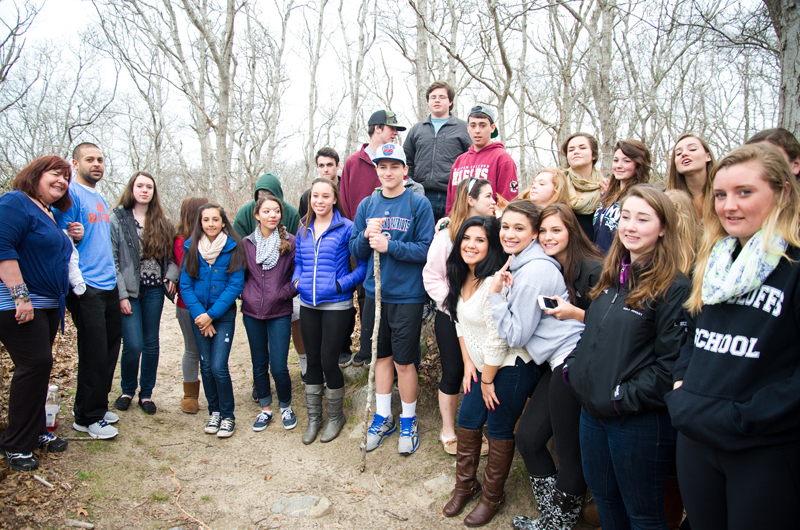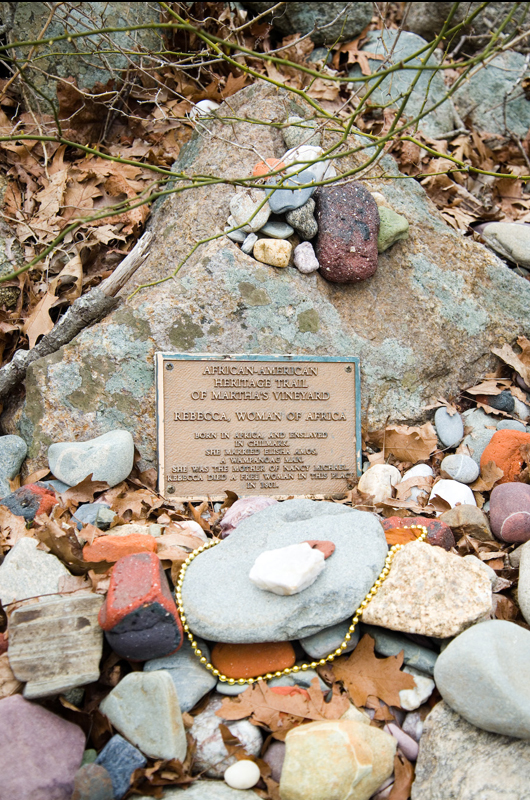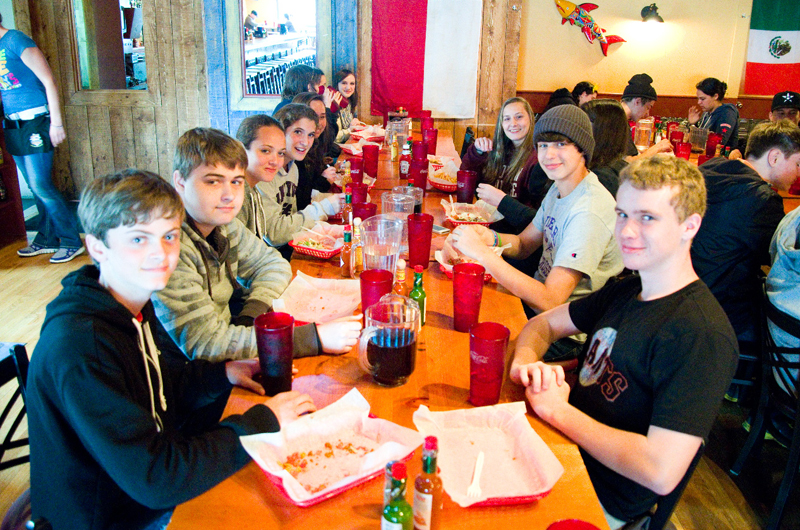Elaine Weintraub says “history” a lot. The word rolls off her tongue briskly in three sharp syllables: hih-store-ee.
“Welcome to the 16th annual tour of the African American Heritage Trail,” she said last Thursday at the start of this year’s sophomore class field trip. “Here’s your chance of learning some real hih-store-ee.”

Ms. Weintraub is the chairman of the history department at the regional high school and head organizer and developer of this annual field trip.
With her on the bus was Brian Scott, currently a teacher at the regional high school and an Education Support Personnel (ESP). Mr. Scott graduated from the regional high school in 2000 and is a former student of Ms. Weintraub’s — both in history class and in the first grade.
Mr. Scott turned to some of the students sitting near him and began counting on his fingers.
“Cape Verdean, Irish, English, well, no, Welsh more specifically, African American and Wamponoag.” He held up his entire hand, fingers spread. “All of those. I’m all of those.”
“I’m Canadian, Italian, French, Scottish and Native American,” said 17-year-old Mercedes Giambattista. Next to Mercedes sat Michael Dexter, a 16-year-old sophomore history buff. “I like mostly U.S. History,” Michael told Mercedes. “So I’m glad I get to get out of school and do something related to it.”
And with that the bus began to roll.
The African American Heritage Trail is spread all around the Vineyard, including diverse physical entities at 25 different dedication sites. It includes stops at every Island town, highlighting various aspects of African American people and their history on Martha’s Vineyard, from pre-Revolutionary American history to contemporary events and people.
Ms. Weintraub’s curriculum strategy is two-fold.
The stories behind the trail are first taught in the classroom by studying a variety of archival resources, such as census reports, newspaper archives, court and jail records and birth and death records.
The second part is walking the trail itself.
On the bus ride to the first location Mr. Scott talked to some students about one of the reasons he loves this trip. “We built this program,” he said. The students in his class of 2000 helped start the trail.
“People think of slave ships and cotton fields and there’s more history to it than that, and the history is here all around us,” he continued. “When I was a kid my grandfather used to drive me all around the Island. He would pick me up at 5 a.m. and drive from Oak Bluffs up to Aquinnah and back before school. I don’t see much of that anymore. Even just driving around is a good way to see the Island and learn about where you live.” Students first visited the memorial of Rebecca, Woman of Africa also called Rebecca Amos. Rebecca was the great-grandmother of Captain William A. Martin, the only African American whaling captain from Martha’s Vineyard. Her memorial is located at Great Rock Bight in Chilmark. The next stops were in Aquinnah and Menemsha, where students learned the history of the Wampanoags who defied the Fugitive Slave Act by aiding a runaway. One plaque honoring them is on the tribal grounds. The other one in Menemsha honors a fisherman who helped by stowing the runaway on board.
The bus then traveled to Oak Bluffs where students were told the history of Shearer Cottage, the trail’s very first dedication spot, and other important figures such as Harlem Renaissance writer Dorothy West.
Students then visited the Old Marine Cemetery, located across from the Lobster Hatchery in Oak Bluffs. It is there, near the shores of Lagoon Pond, that William A. Martin’s mother, Rebecca Martin, may have been buried.
There is a bench dedicated to Rebecca Martin at the cemetery with a plaque that students took a group photo in front of.
“My classmates found this place,” Mr. Scott told the students.
“We chose a bench because the women had a hard life so we thought it was a good choice,” added Ms. Weintraub.
The trail concluded with a trip to Chappaquiddick, where students saw the home of Captain William A. Martin.
Later on at Sharkey’s Cantina in Edgartown, students ate tacos and talked about their favorite moments from the trip.
For the students on the trip this year, the most memorable moment occurred at the beginning of the day in Chilmark when they saw their first dedication marker and where Mr. Scott showed students how special the trail is to him.
Beside the peaceful waters of Vineyard Sound, amidst the soaring specimen trees of Great Rock Bight, Mr. Scott stood in front of Rebecca Amos’ memorial and did something he’s done every year since 2000 when he first honored Rebecca.
He sang.
With his hands in his pockets and eyes closed, the 30-year-old Oak Bluffs native belted out the Negro Spiritual song, Precious Lord Take My Hand.
When he finished singing, the students clapped.
“That was beautiful,” said Ms. Weintraub, “Beautiful hih-store-ee”









Comments
Comment policy »